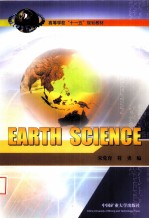图书介绍
地球科学=Earth science 英文2025|PDF|Epub|mobi|kindle电子书版本百度云盘下载

- 宋党育,符勇编 著
- 出版社: 中国矿业大学出版社
- ISBN:
- 出版时间:2009
- 标注页数:260页
- 文件大小:143MB
- 文件页数:271页
- 主题词:
PDF下载
下载说明
地球科学=Earth science 英文PDF格式电子书版下载
下载的文件为RAR压缩包。需要使用解压软件进行解压得到PDF格式图书。建议使用BT下载工具Free Download Manager进行下载,简称FDM(免费,没有广告,支持多平台)。本站资源全部打包为BT种子。所以需要使用专业的BT下载软件进行下载。如BitComet qBittorrent uTorrent等BT下载工具。迅雷目前由于本站不是热门资源。不推荐使用!后期资源热门了。安装了迅雷也可以迅雷进行下载!
(文件页数 要大于 标注页数,上中下等多册电子书除外)
注意:本站所有压缩包均有解压码: 点击下载压缩包解压工具
图书目录
Chapter 1 Introduction to Earth Science1
1 What is Earth Science2
2 Why is Earth Science so Important2
2.1 Environmental Problems3
2.2 Resources4
3 Earth's Spheres4
3.1 Hydroshpere5
3.2 Atmosphere5
3.3 Biosphere5
3.4 Lithosphere6
4 Earthas a System7
Chapter 2 Earth in the Solar System9
1 Orbits10
2 Sizes11
3 Classification12
4 The Origin of the Solar System13
Chapter 3 Composition of the Earth15
1 Chemical Composition of the Earth16
2 Minerals16
2.1 Definition16
2.2 Differences Between Minerals and Rocks19
2.3 Physical Properties of Minerals19
2.4 Mineral Classification20
3 Rocks22
3.1 Igneous Rocks22
3.2 Sedimentary Rocks26
3.3 Metamorphic Rocks31
3.4 Rock Cycle34
Chapter 4 Structure of the Earth37
1 Interior Structure of the Earth38
1.1 Crust39
1.2 Mantle40
1.3 Core41
2 Plate Tectonics42
2.1 Hypothesis of Continental Drift43
2.2 Seafloor Spreading46
2.3 Plate Tectonics Theory51
Chapter 5 Geologic Time63
1 Relative Time64
1.1 Principle of Original Horizontality64
1.2 Law of Superposition65
1.3 Principle of Cross-Cutting Relationships66
1.4 Principle of Faunal Succession67
1.5 Unconformities70
2 Absolute Time72
2.1 Fundamentals of Radiometric Dating73
2.2 Modern Dating Metthods76
3 Geologic Time Scale77
3.1 Structure of the Time Scale77
3.2 Major Events in Different Geologic Time79
Chapter 6 Earthquake85
1 What is an Earthquake86
2 Earthquake Waves88
3 Location of Earthquake89
3.1 Destruction Caused by Seismic Vibrations89
3.2 Tsunami92
4 Earthquake Prediction94
Chapter 7 Volcano97
1 The Nature of Volcanic Activity98
2 Materials Extruded During an Eruption99
2.1 Lava Flows99
2.2 Gases99
3 Volcanoes and Volcanic Eruptions100
3.1 Shield Volcanoes100
3.2 Cinder Cones101
3.3 Composite Cones103
3.4 Volcanic Pipes and Necks104
3.5 Formation of Calderas104
4 Fissure Eruption105
5 Volcanoes and Climate106
6 Intrusive Igneous Activity108
Chapter 8 Weathering111
1 Mechanical Weathering112
1.1 Frost Wedging113
1.2 Unloading113
1.3 Thernal Expansion114
2 Chemical Weathering115
3 Biological Weathering117
4 Rates of Weathering118
Chapter 9 Depositional Environments121
1 Alluvial Fans and Braided Streams122
2 Deltaic Plain122
3 Fluvial Environments123
4 Marine Environments124
5 Delta Fringe Deposits125
6 Deep Water Deposits129
7 Aeolian Deposits129
Chapter 10 Running Water131
1 Water Cycle132
2 Running Water135
2.1 Streamflow135
2.2 Changes Downstream137
2.3 The Effect of Urbanization on Discharge138
3 Base Level and Graded Streams138
4 Work of Streams140
4.1 Erosion140
4.2 Transportation140
4.3 Deposition142
5 Stream Valleys143
6 Placer Deposits147
7 Drainage Systems and Patterns147
8 Stages of Valley Development149
Chapter 11 Groundwater151
1 Distribution and Movement of Groundwater153
1.1 Unsaturated Zone and Saturated Zone154
1.2 Groundwater Movement156
2 Groundwater Classifications156
3 Chemical Composition of Groundwater157
4 Recharge and Discharge of Groundwater157
4.1 Groundwater Recharge158
4.2 Groundwater Discharge158
4.3 Groundwater Recharge and Discharge Affected on Quality161
5 Groundwater Systems161
6 Groundwater Behaviors163
7 Wells163
7.1 Three Basic Types of Wells165
7.2 Well Construction165
7.3 Well Contamination166
8 Geotthermal Energy166
9 Environmental Problems Associated with Groundwater167
Chapter 12 Ocean171
1 Geography of the Ocean172
2 Ocean Floor Landform175
2.1 Continental Margins175
2.2 Oceanic Ridge177
2.3 Ocean Basin Floor178
2.4 Seafloor Sediments181
3 Ocean Water181
3.1 Composition of Seawater182
3.2 Ocean Temperature Variation183
3.3 Ocean Density Variation184
4 Dynamic Ocean184
4.1 Ocean Current185
4.2 Ocean Wave187
4.3 Tides190
4.4 Coast193
4.5 Tsunami195
Chapter 13 Weather and Climate197
1 Composition and Structure of the Atmosphere198
1.1 Atmospheric Composition198
1.2 Atmospheric Structure200
2 Thermal Energy and Temperature of Atmosphere201
2.1 Radiation201
2.2 Mechanisms of Heat Transfer203
2.3 Heating the Atrnosphere204
3 Moisture in the Air207
3.1 Changes of State207
3.2 Humidity209
3.3 Necessary Conditions for Condensation210
3.4 Condense Phenomena on the Ground and in the Air212
3.5 Precipitation212
4 Pressure and Wind215
4.1 Reasons of Air Pressure Change215
4.2 Air Pressure Field215
4.3 Factors Affecting Wind215
4.5 Circulation of the Atmosphere218
5 Weather Systems220
5.1 Air Masses221
5.2 Fronts222
5.3 Cyclone and Anticyclone225
6 Climate Formation227
6.1 Properties of Climate Systems227
6.2 Circulating Factors of Climate Formation228
6.3 Local Winds228
7 Climate Change and Human Impact on Climate229
7.1 History Data of Climate Changes230
7.2 Factors of Climate Change230
7.3 Human Activity Impact on Climate231
7.4 Urban Clinate232
7.5 International Weather Modification233
Chapter 14 Energy239
1 Coal241
1.1 Formation of Coal241
1.2 Types of Coal242
1.3 Methods of Mining243
1.4 Uses of Coal244
1.5 World Coal Reserves246
1.6 Environmental Effects248
2 Petroleum248
2.1 Composition248
2.2 Formation249
2.3 Petroleum Reservoirs250
2.4 Petroleum Exploration250
2.5 Consumption252
3 Natural Gas252
3.1 Sources253
3.2 Storage and Transport254
3.3 Uses of Natural Gas255
4 Nuclear Energy256
5 Renewable Energy257
5.1 Wind Power258
5.2 Water Power259
5.3 Solar Energy259
5.4 Biofuel260
5.5 Geothermal Energy260